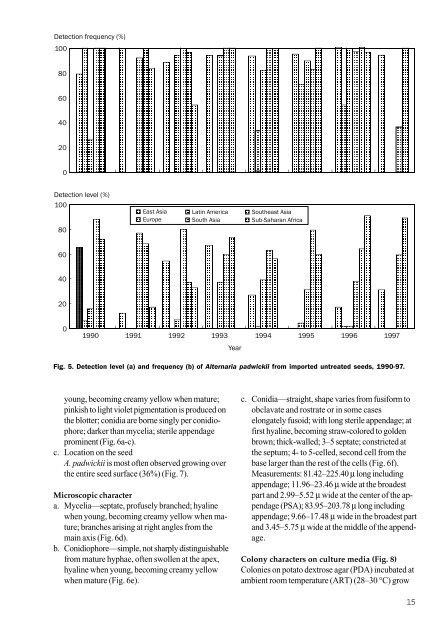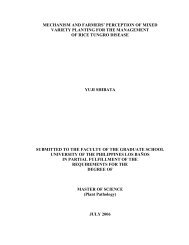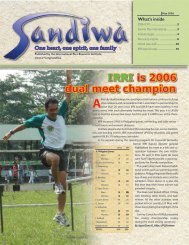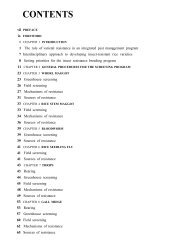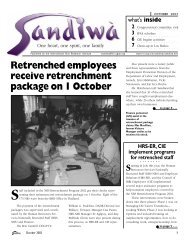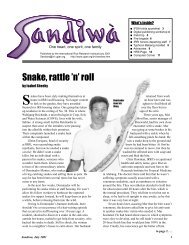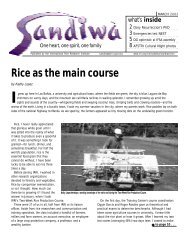Untitled - International Rice Research Institute
Untitled - International Rice Research Institute
Untitled - International Rice Research Institute
You also want an ePaper? Increase the reach of your titles
YUMPU automatically turns print PDFs into web optimized ePapers that Google loves.
Detection frequency (%)<br />
100<br />
80<br />
60<br />
40<br />
20<br />
0<br />
Detection level (%)<br />
100<br />
80<br />
East Asia<br />
Europe<br />
Latin America<br />
South Asia<br />
Southeast Asia<br />
Sub-Saharan Africa<br />
60<br />
40<br />
20<br />
0<br />
1990 1991 1992 1993 1994 1995 1996 1997<br />
Year<br />
Fig. 5. Detection level (a) and frequency (b) of Alternaria padwickii from imported untreated seeds, 1990-97.<br />
young, becoming creamy yellow when mature;<br />
pinkish to light violet pigmentation is produced on<br />
the blotter; conidia are borne singly per conidiophore;<br />
darker than mycelia; sterile appendage<br />
prominent (Fig. 6a-c).<br />
c. Location on the seed<br />
A. padwickii is most often observed growing over<br />
the entire seed surface (36%) (Fig. 7).<br />
Microscopic character<br />
a. Mycelia—septate, profusely branched; hyaline<br />
when young, becoming creamy yellow when mature;<br />
branches arising at right angles from the<br />
main axis (Fig. 6d).<br />
b. Conidiophore—simple, not sharply distinguishable<br />
from mature hyphae, often swollen at the apex,<br />
hyaline when young, becoming creamy yellow<br />
when mature (Fig. 6e).<br />
c. Conidia—straight, shape varies from fusiform to<br />
obclavate and rostrate or in some cases<br />
elongately fusoid; with long sterile appendage; at<br />
first hyaline, becoming straw-colored to golden<br />
brown; thick-walled; 3–5 septate; constricted at<br />
the septum; 4- to 5-celled, second cell from the<br />
base larger than the rest of the cells (Fig. 6f).<br />
Measurements: 81.42–225.40 µ long including<br />
appendage; 11.96–23.46 µ wide at the broadest<br />
part and 2.99–5.52 µ wide at the center of the appendage<br />
(PSA); 83.95–203.78 µ long including<br />
appendage; 9.66–17.48 µ wide in the broadest part<br />
and 3.45–5.75 µ wide at the middle of the appendage.<br />
Colony characters on culture media (Fig. 8)<br />
Colonies on potato dextrose agar (PDA) incubated at<br />
ambient room temperature (ART) (28–30 °C) grow<br />
15


